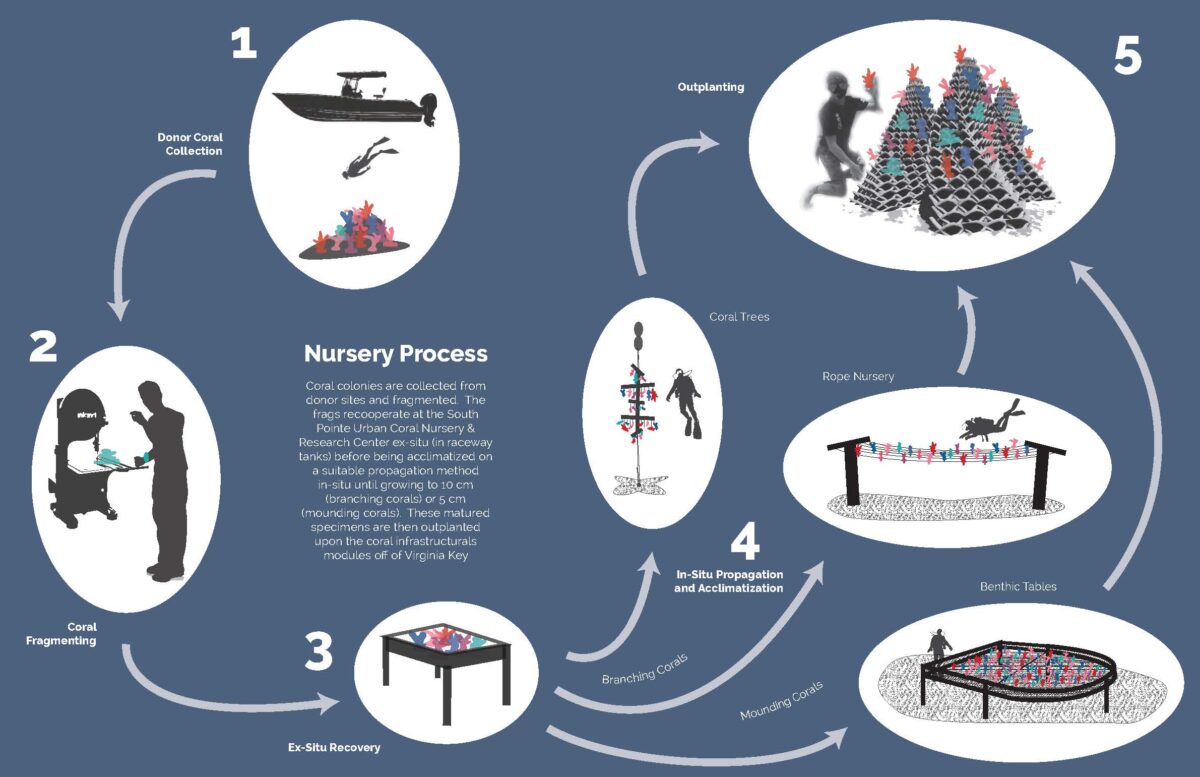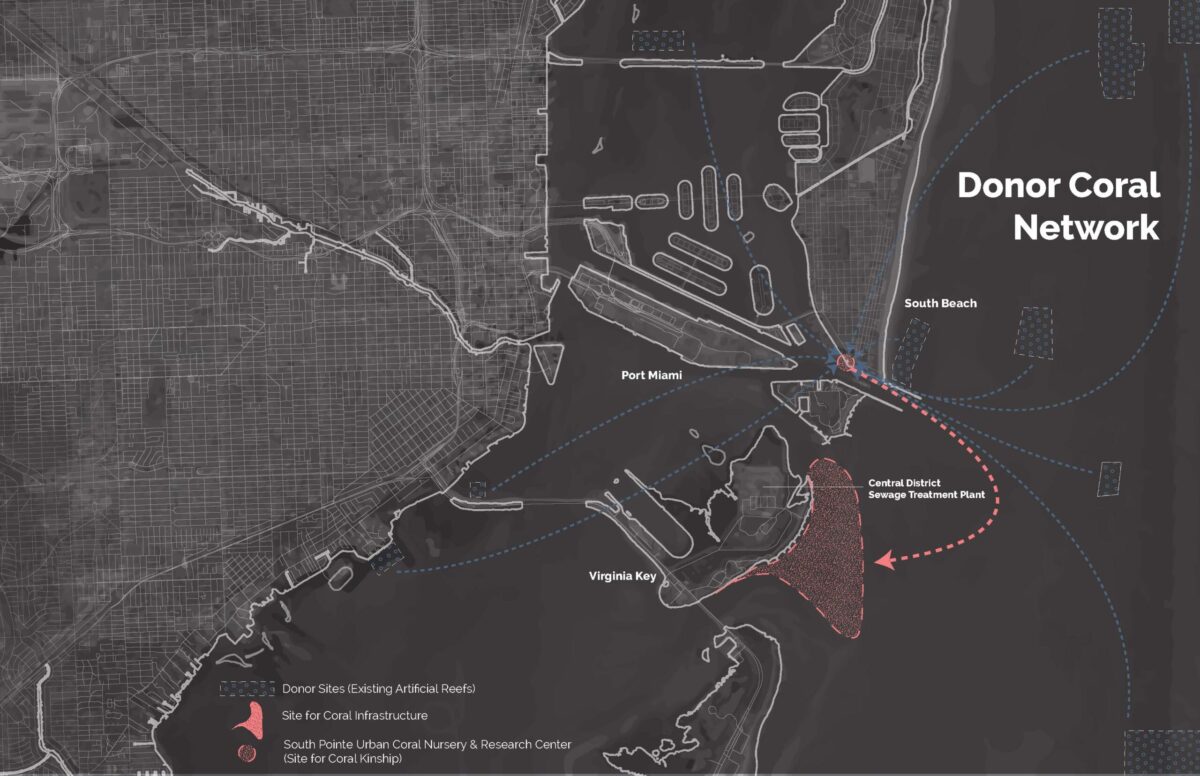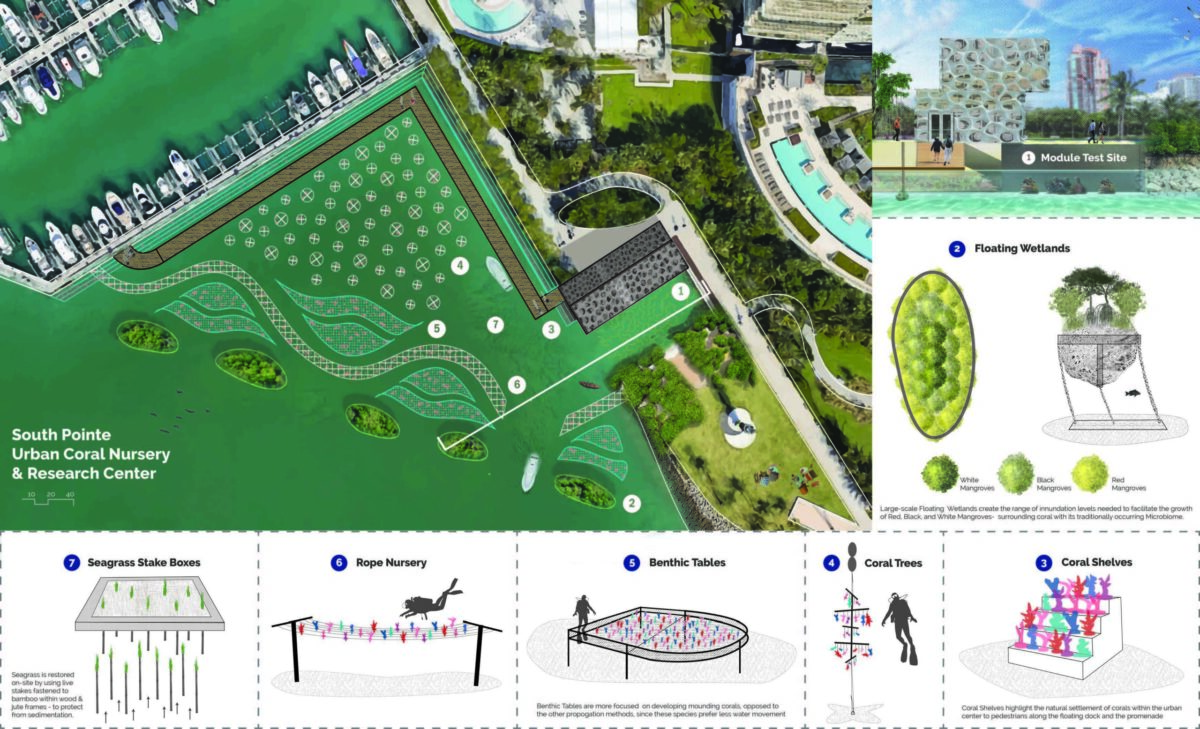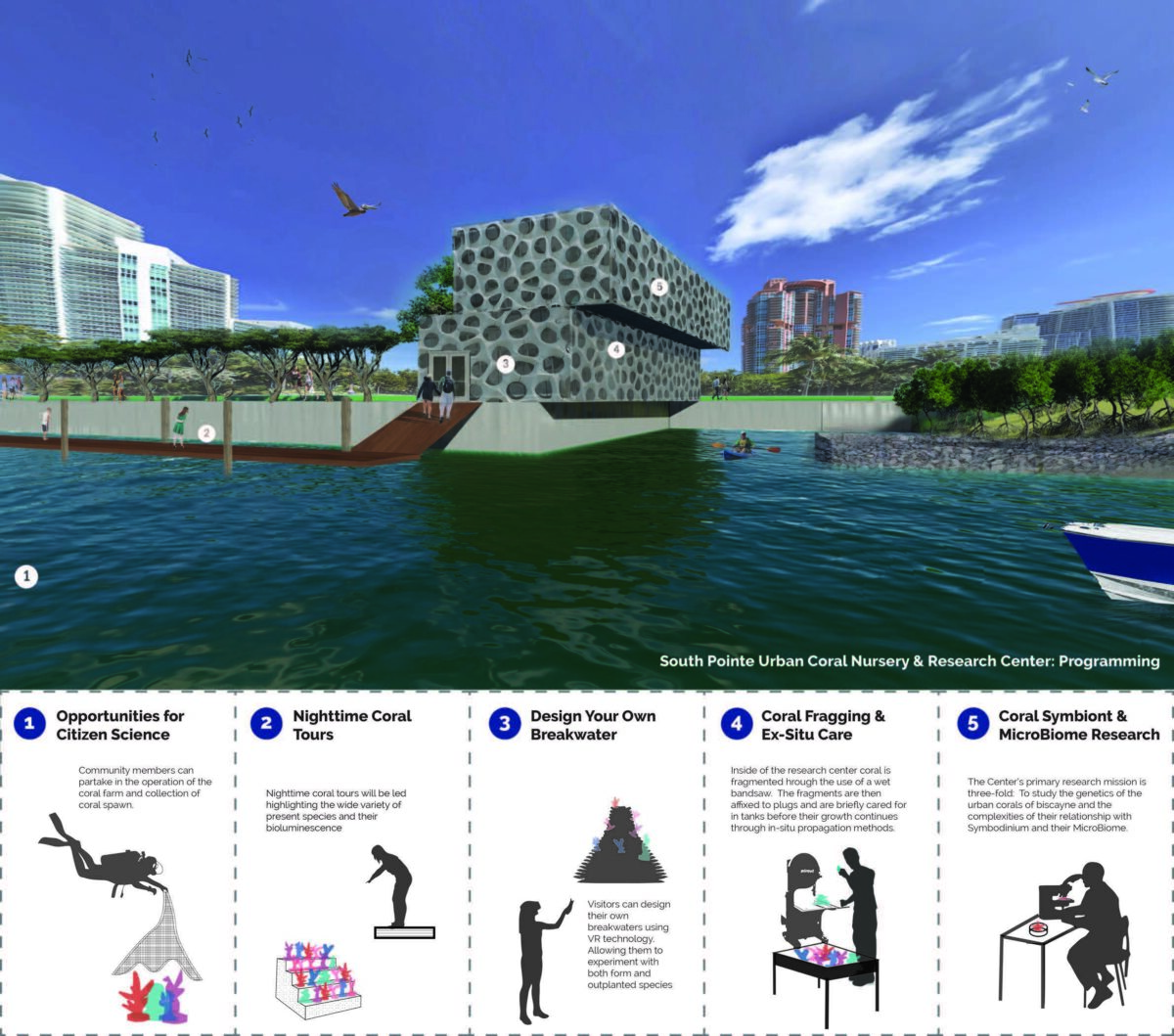The growing stressors of global climate change and urbanization have brought about the decline of one of our planet’s most critical biomes – coral reefs. As coral reefs vanish, we lose not only their surrounding ecologies and economics, but also their structural complexity, which allows them to efficiently serve as natural breakwaters that protect coastlines from flooding and erosion. Design with Diploria showcases a multi-site exploration of these entanglements within Miami’s urban context by working to restore an enigmatic, but diminished, local ecosystem as an infrastructural and social resilience strategy. This proposal aims to both foster coral resilience in tandem with urban resilience and to reconcile urban activity with coral ecosystem health in a way that creates equity and kinship across species lines.
Learn about Matt’s work at mattgrosser.design.



